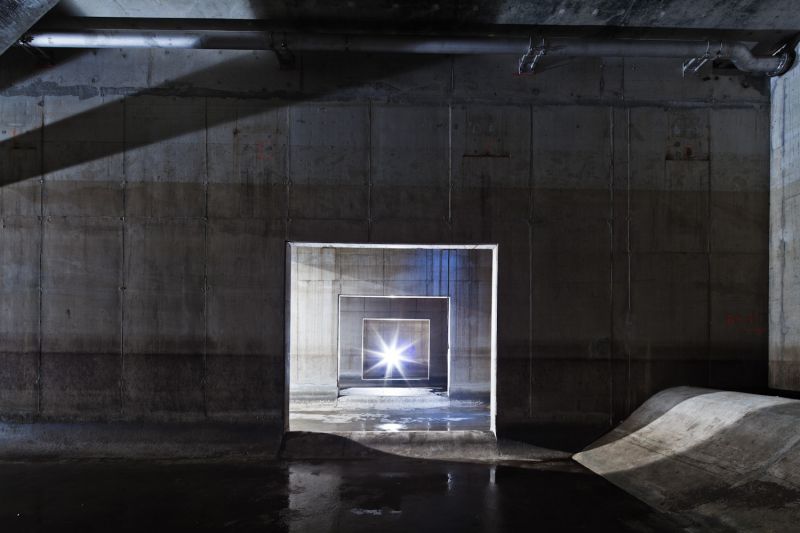Every weekday, starting at 12:30 hours, it's High Noon at the biennale.
Today the focus is on the subsurface which, with its man-made and natural components, plays an important, if not crucial, role in the urban climate and global energy transition. On the one hand, the sub-surface is associated with a variety of challenges such as subsidence, pollution, damage to infrastructure and shortages of space for new urban systems. On the other hand, the sub-surface presents opportunities in terms of solutions for flooding, reduction in heat stress, and decentralized energy systems.

Therefore, it is necessary to place sub-surface issues in their appropriate perspective, to enable a more resilient design that brings together ecosystem services, climate and urban systems, and which takes full account of the dynamics of the subsoil. To achieve this, the sub-surface must be an integral part of above ground planning and design. Organization of the sub-surface needs to be reflected visually in relation to consideration of (surface) spatial morphology. Especially in urban renewal of existing cities that appeals to the concepts of ‘zero land take’ and ‘compact city’. The development of M4H is an example for both concepts and in its redevelopment the sub-surface plays and important role.
Underground Container
 This High Noon will introduce the design approach described above as well as research into the M4H area by students of the Delft Technical University. The presentations are followed by a tour through the M4H district, to the Underground Container located at Keileweg 38. The container serves as an information center which will be traveling through Rotterdam to create awareness for the subsurface. On 14 and 15 June, the Undergrond Container is located in the M4H District to learn visitors more about, among others, the former gasplant in the area, the way we deal with the polluted soil we inherited as a result of it, the role of the subsurface in the energy transition and the sewer system of Rotterdam.
This High Noon will introduce the design approach described above as well as research into the M4H area by students of the Delft Technical University. The presentations are followed by a tour through the M4H district, to the Underground Container located at Keileweg 38. The container serves as an information center which will be traveling through Rotterdam to create awareness for the subsurface. On 14 and 15 June, the Undergrond Container is located in the M4H District to learn visitors more about, among others, the former gasplant in the area, the way we deal with the polluted soil we inherited as a result of it, the role of the subsurface in the energy transition and the sewer system of Rotterdam.
Location: Keileweg 38, 14 and 15 June, from 10 am - 4 pm
Today the focus is on the subsurface which, with its man-made and natural components, plays an important, if not crucial, role in the urban climate and global energy transition. On the one hand, the sub-surface is associated with a variety of challenges such as subsidence, pollution, damage to infrastructure and shortages of space for new urban systems. On the other hand, the sub-surface presents opportunities in terms of solutions for flooding, reduction in heat stress, and decentralized energy systems.

Underground Water Storage Museumpark Rotterdam
© Jannes Linders
Therefore, it is necessary to place sub-surface issues in their appropriate perspective, to enable a more resilient design that brings together ecosystem services, climate and urban systems, and which takes full account of the dynamics of the subsoil. To achieve this, the sub-surface must be an integral part of above ground planning and design. Organization of the sub-surface needs to be reflected visually in relation to consideration of (surface) spatial morphology. Especially in urban renewal of existing cities that appeals to the concepts of ‘zero land take’ and ‘compact city’. The development of M4H is an example for both concepts and in its redevelopment the sub-surface plays and important role.
Underground Container

Underground Container
Location: Keileweg 38, 14 and 15 June, from 10 am - 4 pm
Since IABR–2014–URBAN BY NATURE we have been highlighting the subsurface as an important challenge for urban planners and designers. Read more here.
location: HAKA Building
date: June 14
time: 12:30 am - 2 pm
language: English